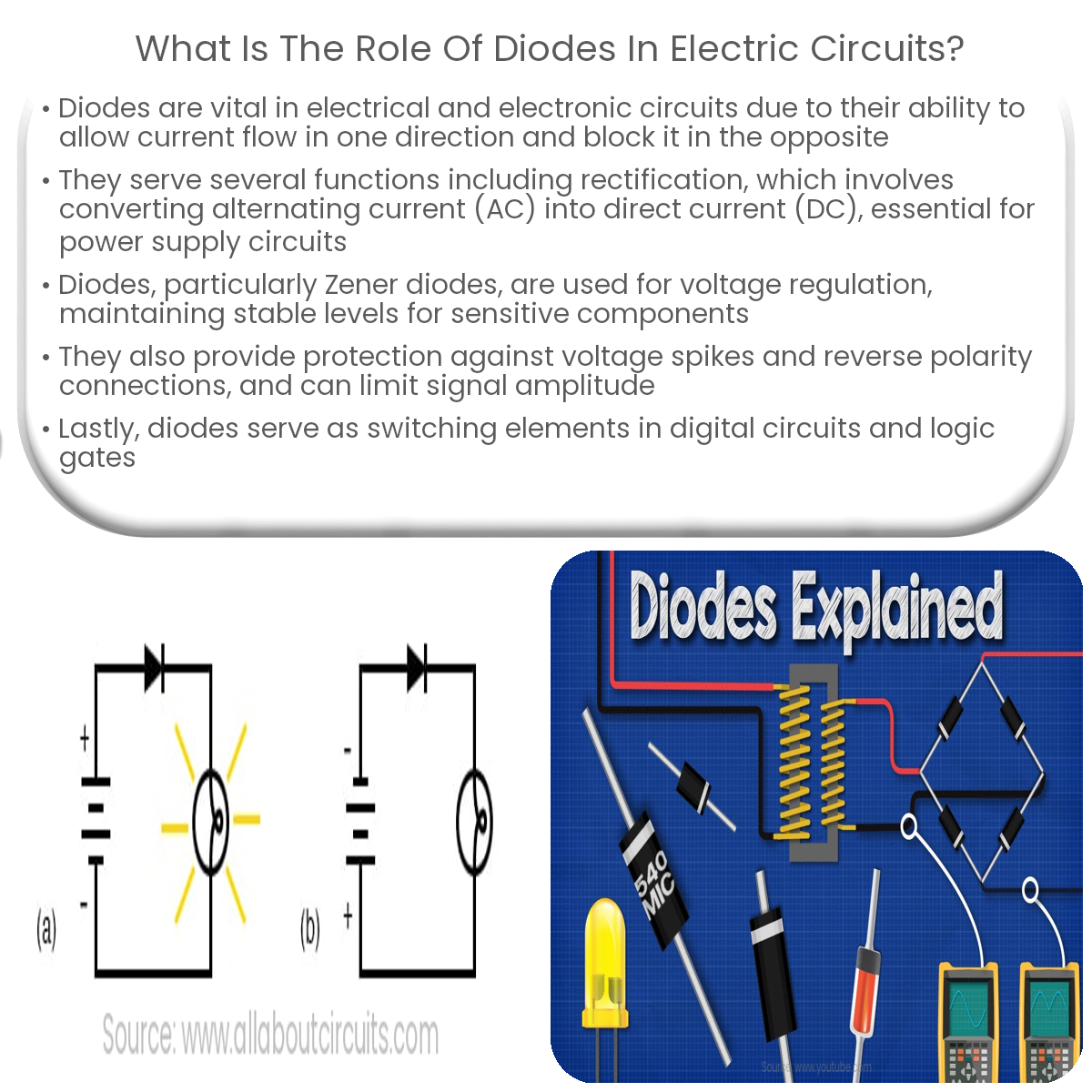Diodes are essential components in electrical and electronic circuits. They are semiconductor devices that allow current to flow in one direction while blocking it in the opposite direction.
The Role of Diodes in Electric Circuits
Diodes are essential components in electrical and electronic circuits. They are semiconductor devices that allow current to flow in one direction while blocking it in the opposite direction. This unique property makes diodes invaluable in various applications. In this article, we will explore the key roles that diodes play in electric circuits.
Rectification
One of the primary functions of diodes is to convert alternating current (AC) into direct current (DC). This process, known as rectification, is essential for power supply circuits that provide DC voltage to electronic devices. Diodes can be used in both half-wave and full-wave rectifier configurations, depending on the required output characteristics.
Voltage Regulation
Diodes can be used to regulate voltage levels in a circuit. Zener diodes, a specific type of diode, maintain a constant voltage across their terminals when the reverse voltage applied to them exceeds a certain value known as the Zener voltage. This property makes Zener diodes ideal for voltage regulation applications, ensuring stable voltage levels for sensitive electronic components.
Protection
Diodes can be used to protect circuits and components from damage caused by voltage spikes or reverse polarity connections. For instance, diodes can be connected in reverse parallel with a load to provide protection against voltage spikes by conducting current when the voltage exceeds a certain level. Similarly, diodes can protect against reverse polarity connections by preventing current flow when the voltage is applied in the wrong direction.
Signal Clipping and Limiting
Diodes can be employed to clip or limit the amplitude of a signal. By selectively conducting current when the signal voltage reaches a certain level, diodes can prevent signals from exceeding a predefined voltage range. This function is useful in applications such as waveform shaping, distortion, and noise reduction.
Switching and Logic
Diodes can be used as switching elements in digital circuits and logic gates. Fast-switching diodes, such as Schottky diodes, can rapidly switch between conducting and non-conducting states, making them suitable for high-speed digital applications. Additionally, diodes can be combined to create basic logic gates such as AND and OR gates.
In conclusion, diodes play a crucial role in electric circuits by enabling rectification, voltage regulation, protection, signal clipping and limiting, and switching and logic functions. Their versatile nature and unique properties make them an indispensable component in electronics.


